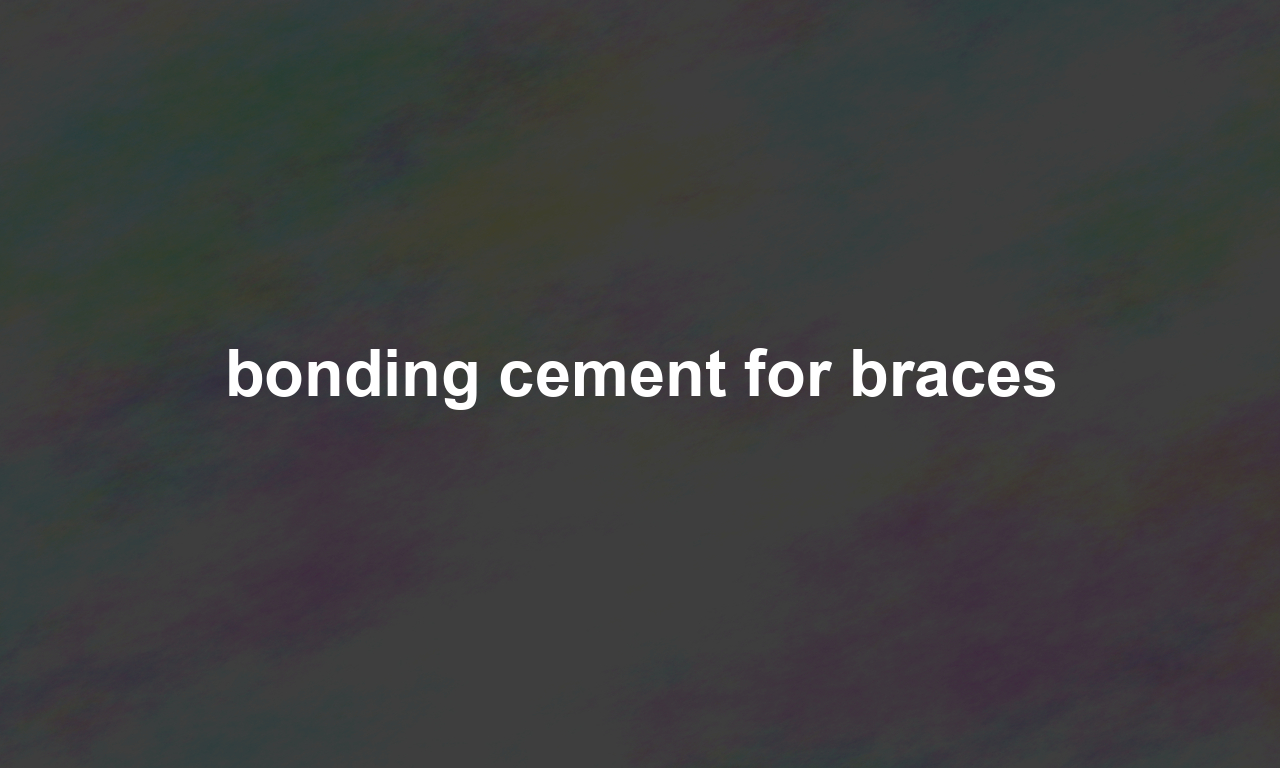Have you ever wondered how those tiny metal brackets of braces stick so securely to your teeth? If you have, you’re in the right place! Today, we’re diving into the fascinating world of bonding cement for braces. This essential material plays a crucial role in orthodontic treatments, ensuring that braces remain fixed in place as they work their magic to perfect your smile. In this article, we’ll break down what bonding cement is, how it works, and answer some of the most common questions about it. Whether you’re considering braces for yourself or your child, this information is a must-know.
What is Bonding Cement?
Bonding cement, also known as adhesive or dental glue, is a specialized material used to attach orthodontic brackets to the enamel of your teeth. The main goal of bonding cement is to provide a strong, durable attachment that can withstand the various forces exerted from chewing, speaking, and the constant pressure applied by the braces themselves.
Types of Bonding Cement
Orthodontists typically use two main types of bonding cement:
How Bonding Cement Works
The process of bonding brackets to teeth is both precise and methodical. Here’s a step-by-step look at how it works:
The Strength of Bonding Cement
Bonding cement is uniquely formulated to be both strong and durable. It needs to withstand the constant forces and movements of your teeth while you eat and speak. Additionally, it’s designed to be gentle on your enamel, ensuring that minimal damage occurs when the braces are eventually removed.
Common Questions About Bonding Cement
Is Bonding Cement Safe?
Yes, bonding cement is entirely safe to use. It has been extensively researched and tested for dental applications. The materials are biocompatible, which means they are designed to work harmoniously with your body without causing adverse reactions. For more information about the safety and components of dental adhesives, you can refer to this detailed guide on dental bonding systems.
Can Bonding Cement Wear Off?
Over time, the strength of bonding cement can diminish, just like any other material. Factors such as poor oral hygiene, eating hard foods, or accidental trauma can cause brackets to become loose. If this happens, it’s crucial to visit your orthodontist to have them re-bonded. Most modern bonding cements, however, are designed to last throughout the entire duration of your orthodontic treatment.
How Do I Take Care of My Braces and Bonding Cement?
Proper care and maintenance are essential for ensuring that your braces and the bonding cement remain in top condition. Here are a few tips:
Conclusion
Bonding cement is a vital component in the world of orthodontics, providing the essential link between braces and your teeth. Understanding how it works and what to expect can ease many concerns you might have about braces and their upkeep. For more detailed information on orthodontic procedures, the American Association of Orthodontists offers a wealth of resources and articles that can further enrich your knowledge. With proper care and attention, the journey to achieving a perfect smile can be smooth and worry-free.
In the enchanting journey of orthodontic treatment, bonding cement holds things together—quite literally! So, the next time you see someone with braces, you’ll know just what makes those metal brackets stay put.

